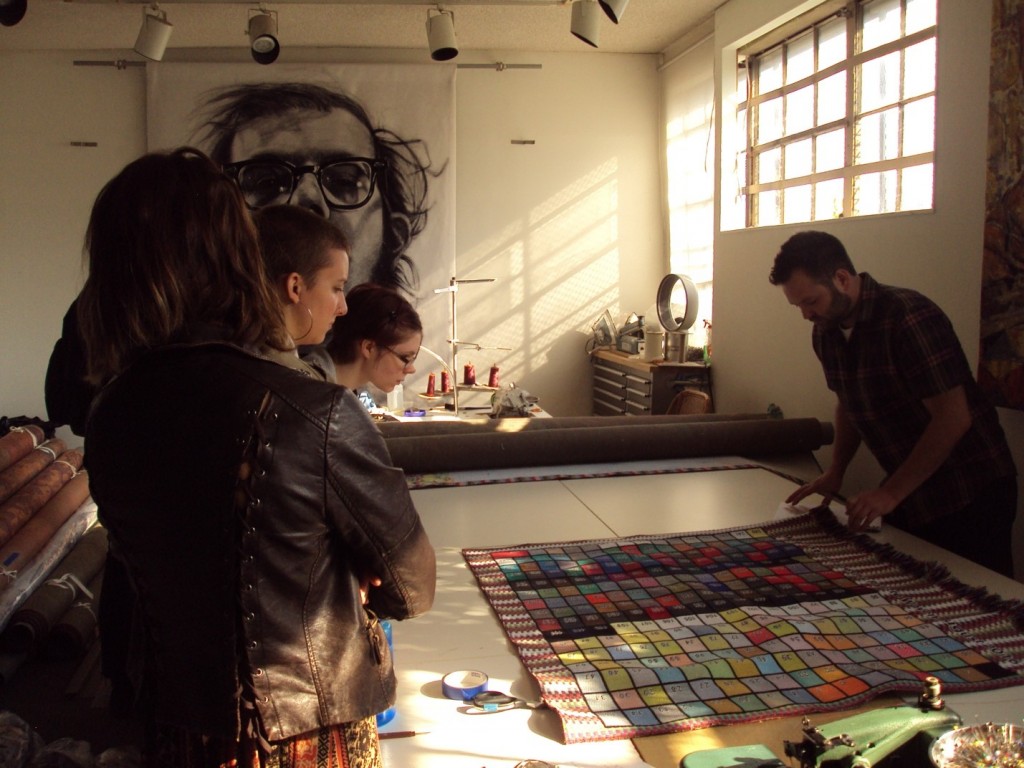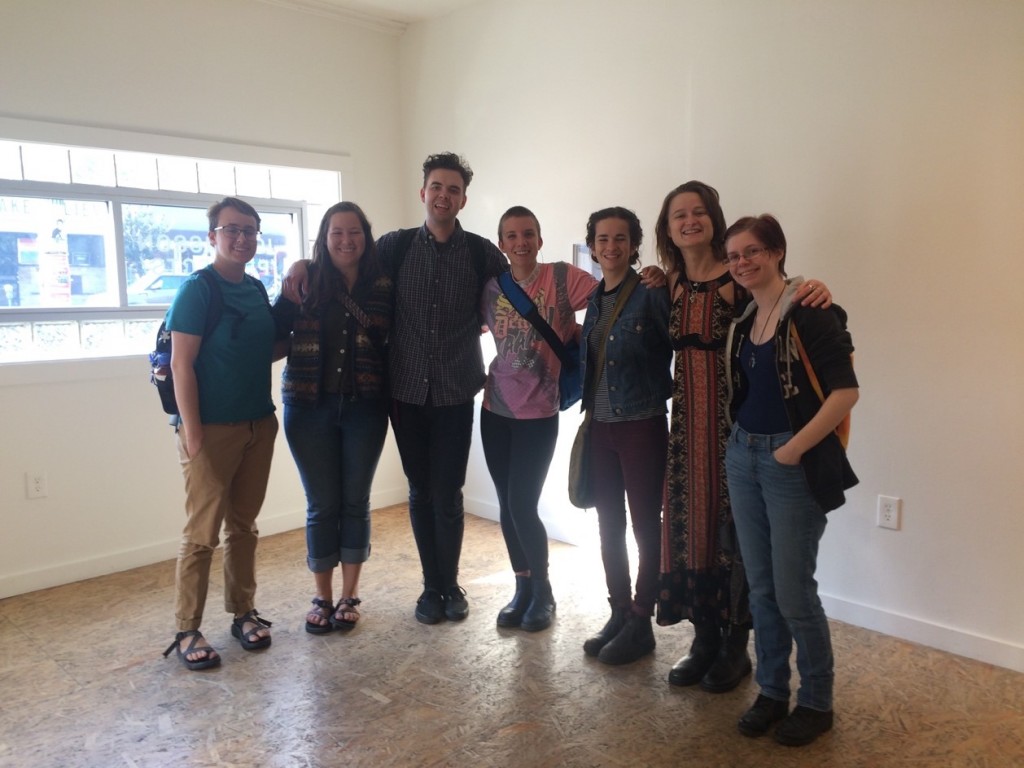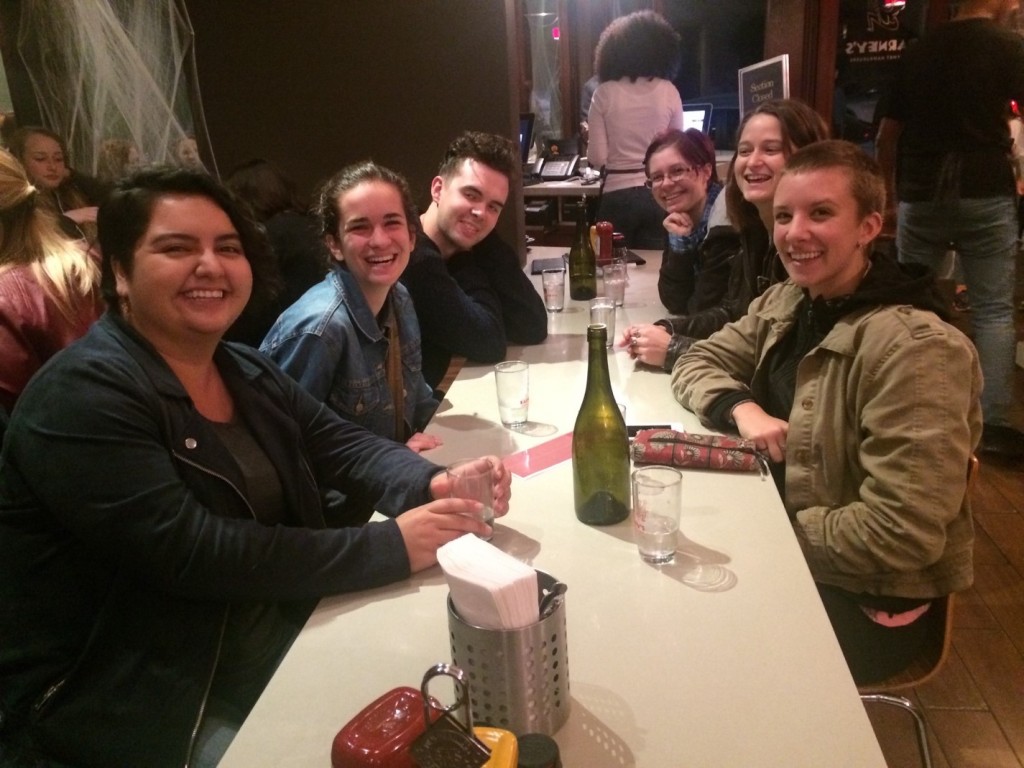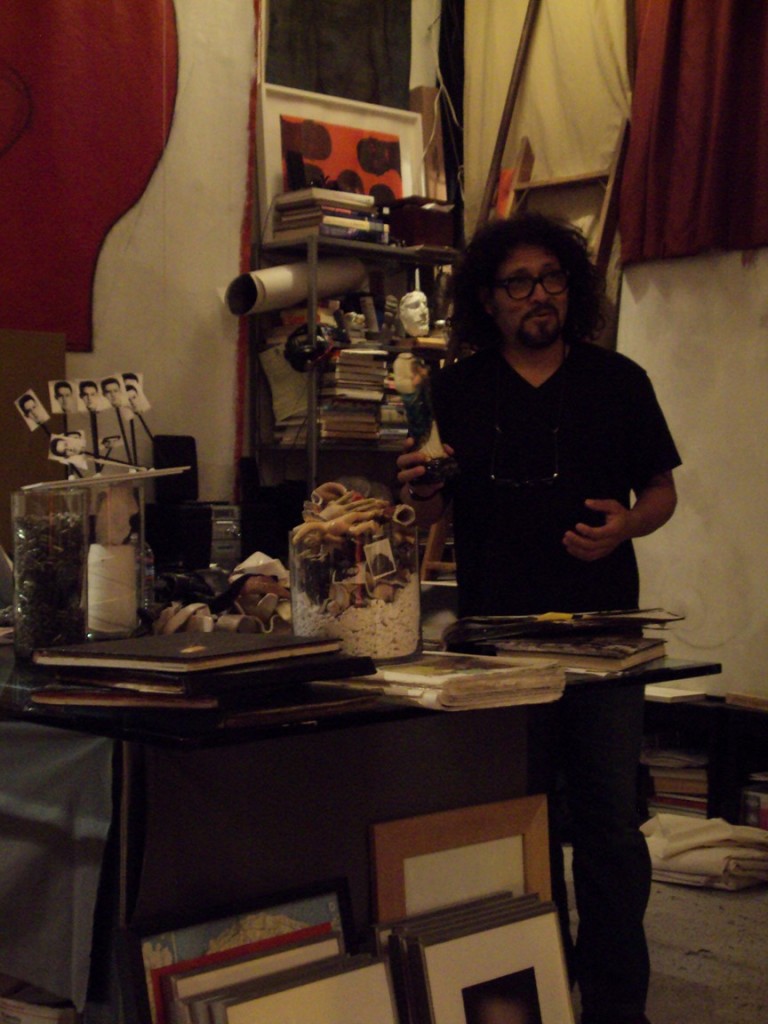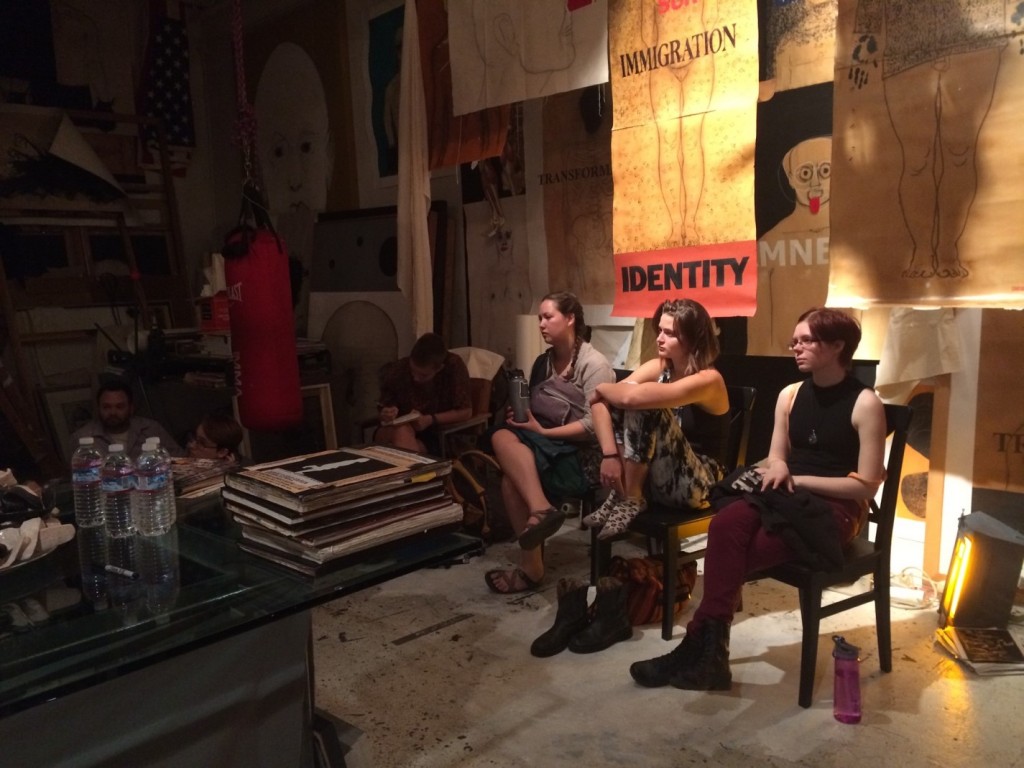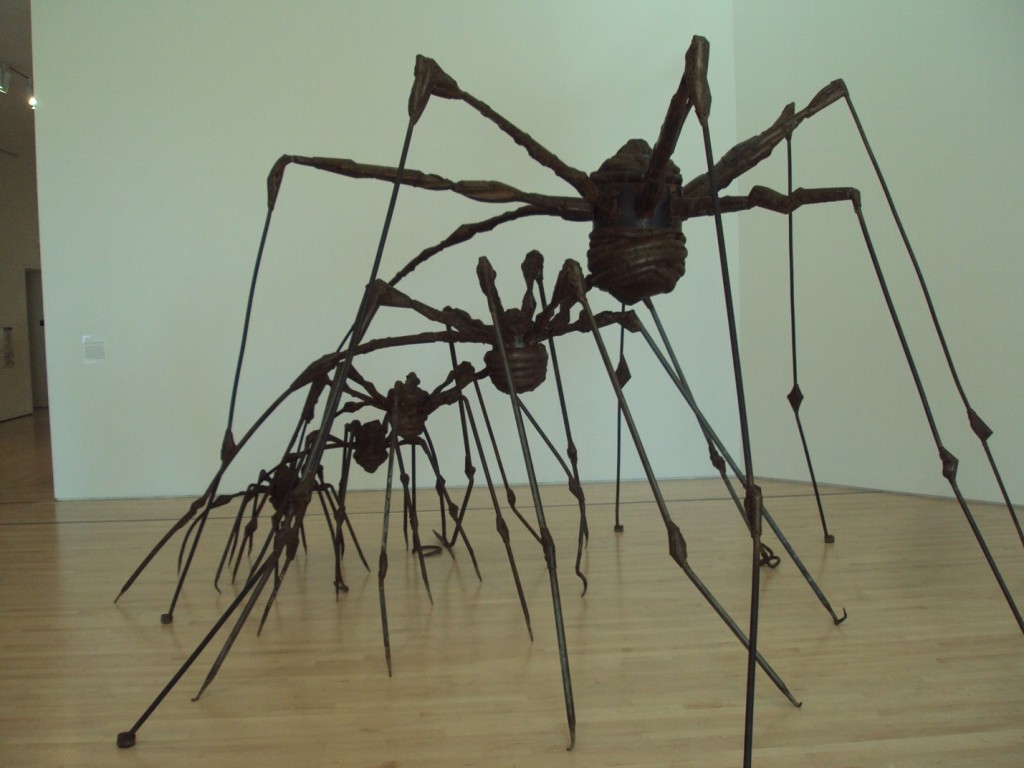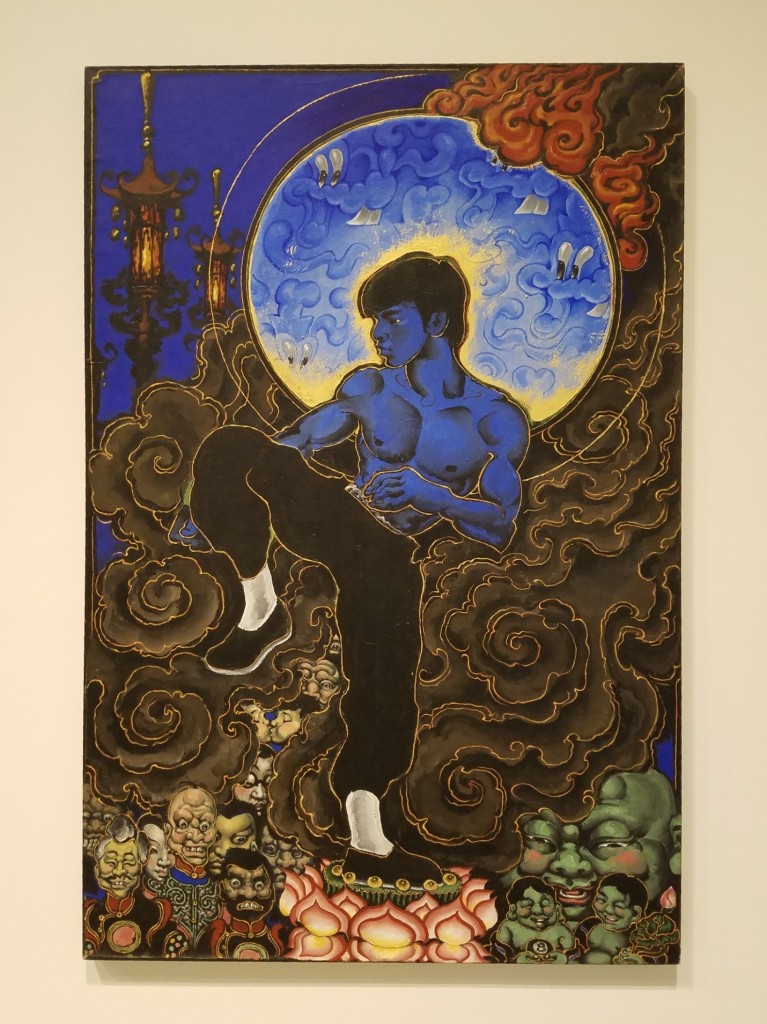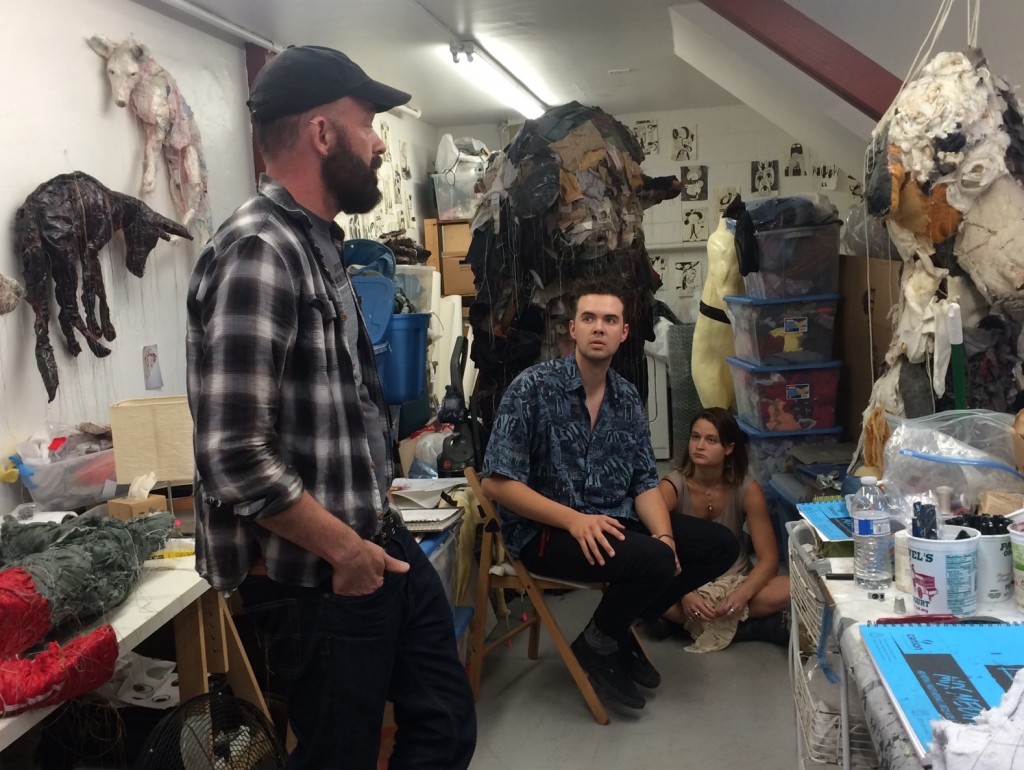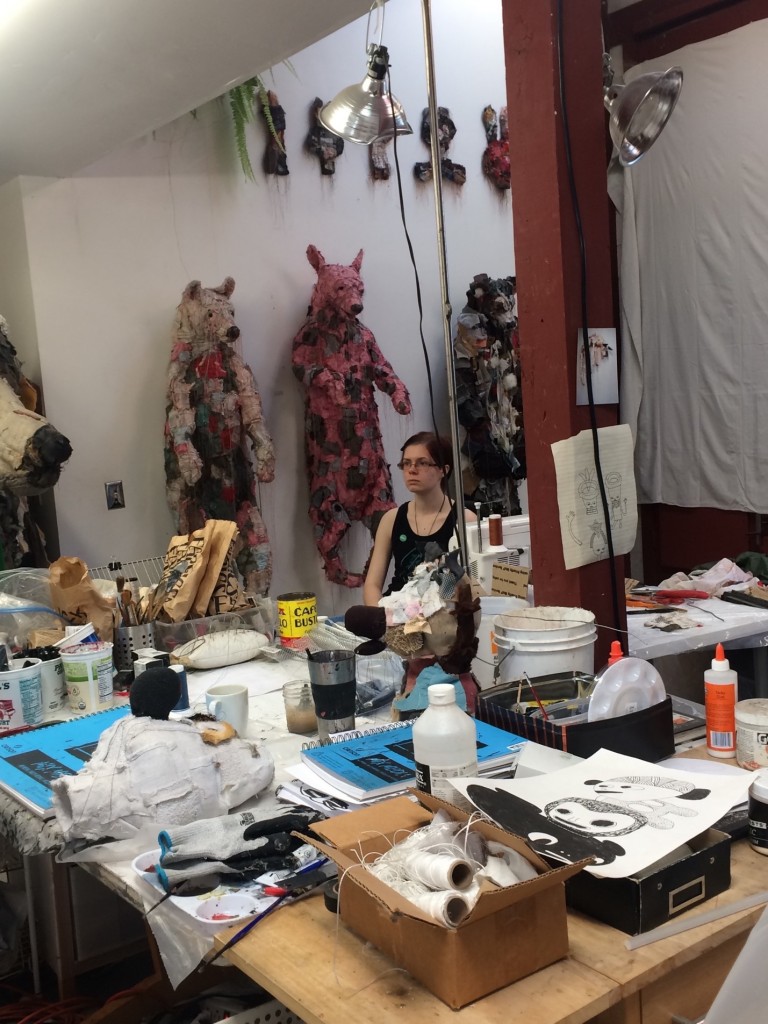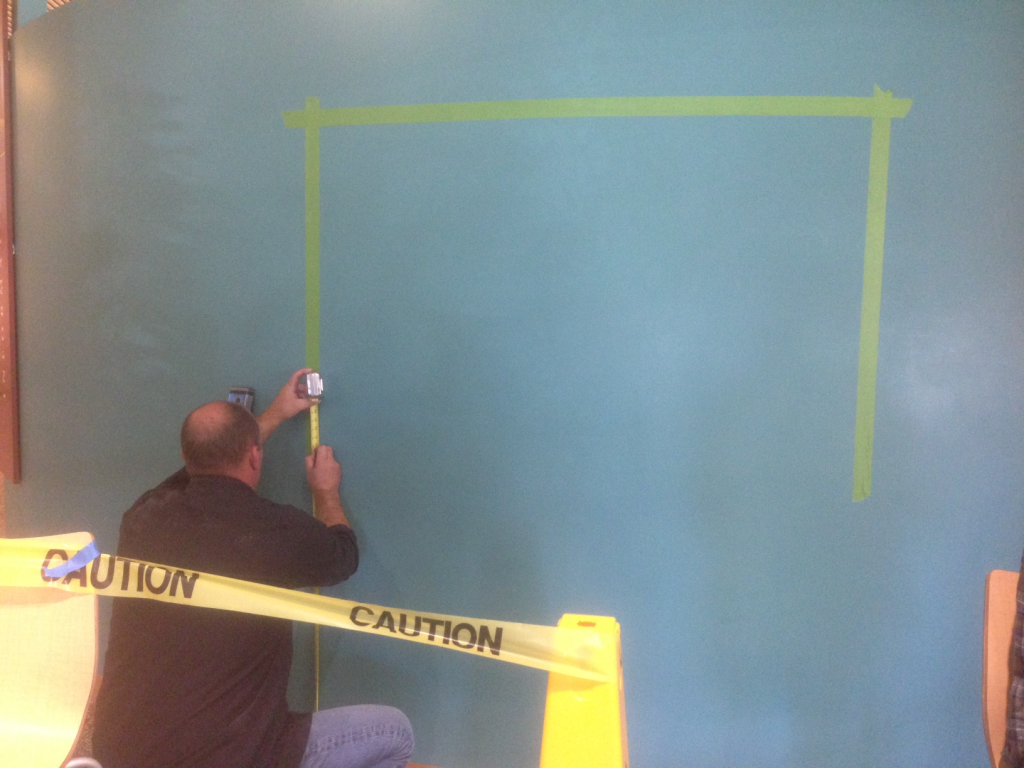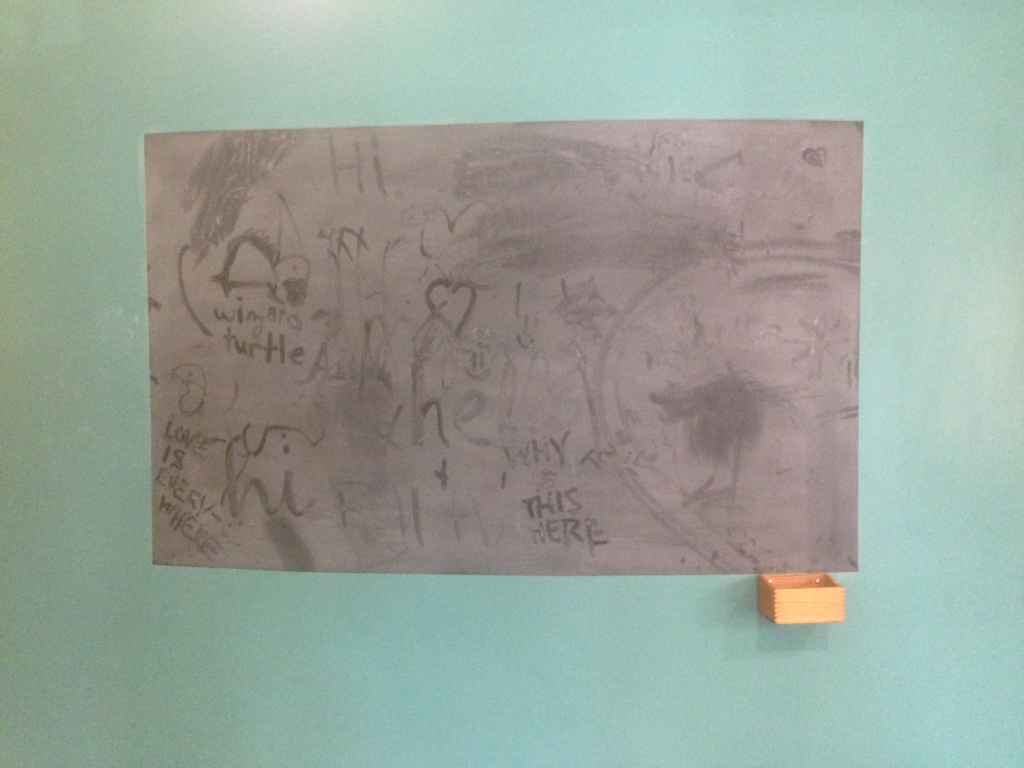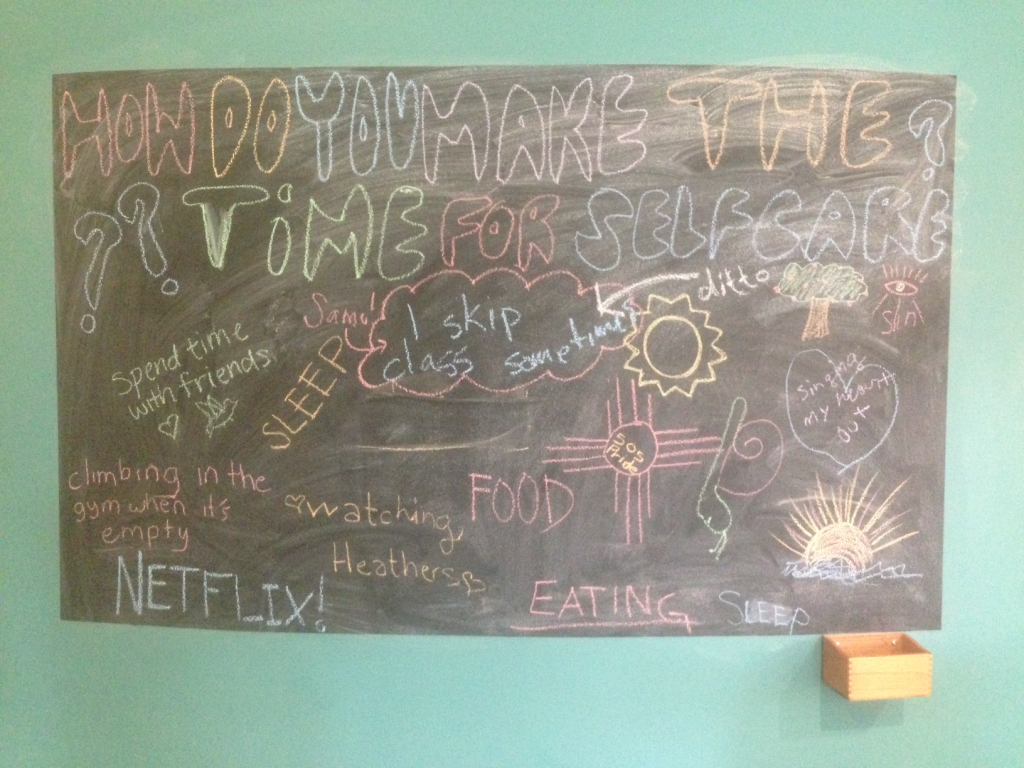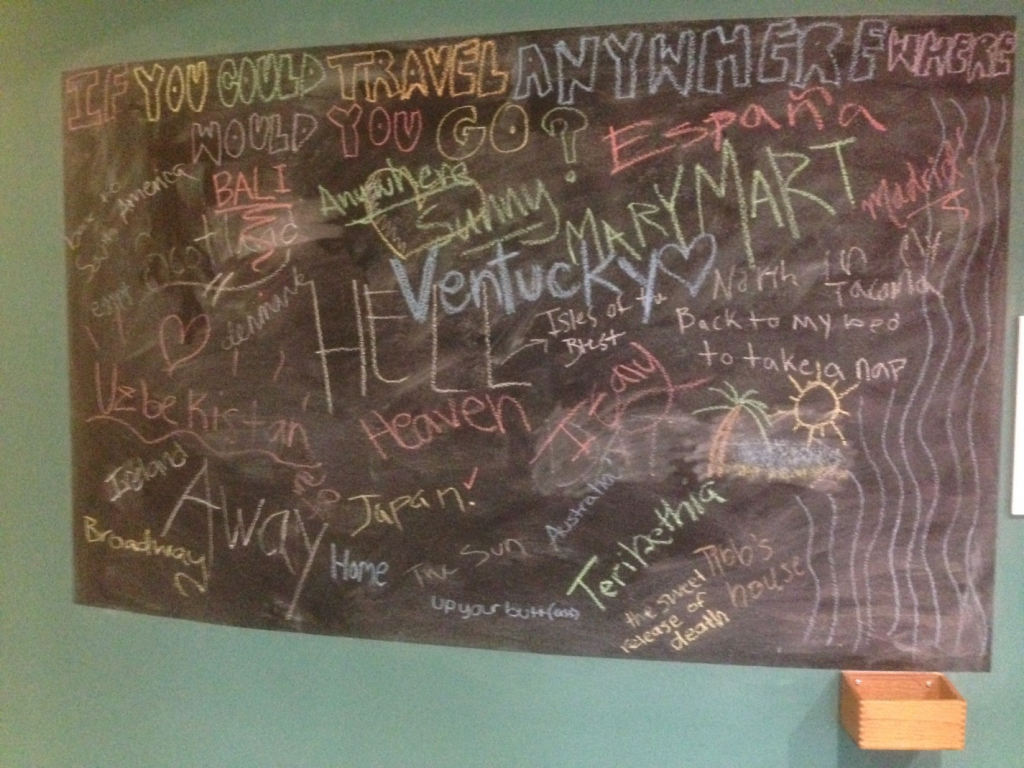Bay Area Field Trip
Seven senior art majors, Assistant Professor Chad Gunderson, Professor Janet Marcavage, and Professor Elise Richman spent Fall Break in the Bay Area visiting artists’ studios, galleries, and museums. Additionally, participants in this multi-day adventure were able to connect with a couple of art alumni, enjoy one another’s company over meals and on BART rides, and even fit in some thrift store shopping! Learn more about this incredible bonding and learning experience in the posts below, which capture the first-hand perspectives of six of the participating seniors.
DAY I
Mairan Smith:
On the first day in the Bay Area we began exploring Oakland by visiting Magnolia Editions, a printmaking studio that collaborates with artists to develop new techniques and innovative solutions. This was a really amazing experience and probably my favorite place we visited on the trip. This is the printmaking studio Chuck Close works with, so there were complete and test prints of his art all around.
While we were there we learned about the different types of projects they work on and see some of the current projects in process. In addition to various printmaking techniques we learned about tapestry making and papermaking. We were able to really see how this studio experiments and tinkers with process to try and create new effects. They especially try and incorporate new digital technology into more traditional processes. For example, they were working on a piece for a San Francisco subway station in Chinatown and were experimenting with printing on tiles.
While we were there the director also showed us how to make paper with real money! He also was super enthusiastic in sharing about his project to try and recreate 16th century paper. He explained how he worked with sheep geneticists to source the most authentic felt and is currently trying to figure out the best way to break down the fibers of modern linen. His current plan is to use mushrooms. It was amazing. Everyone was so warm and friendly and open to sharing what they were working on. It was a really wonderful look into a different, more experimental approach to art making. I think it made everyone think about new ways we could experiment with our own art making.
Walker Edison:
During the second half of our day in Oakland we walked around visiting several different galleries. We saw a wide variety of art and we also got the chance to speak with some of the artists as well as see some of their studio spaces.
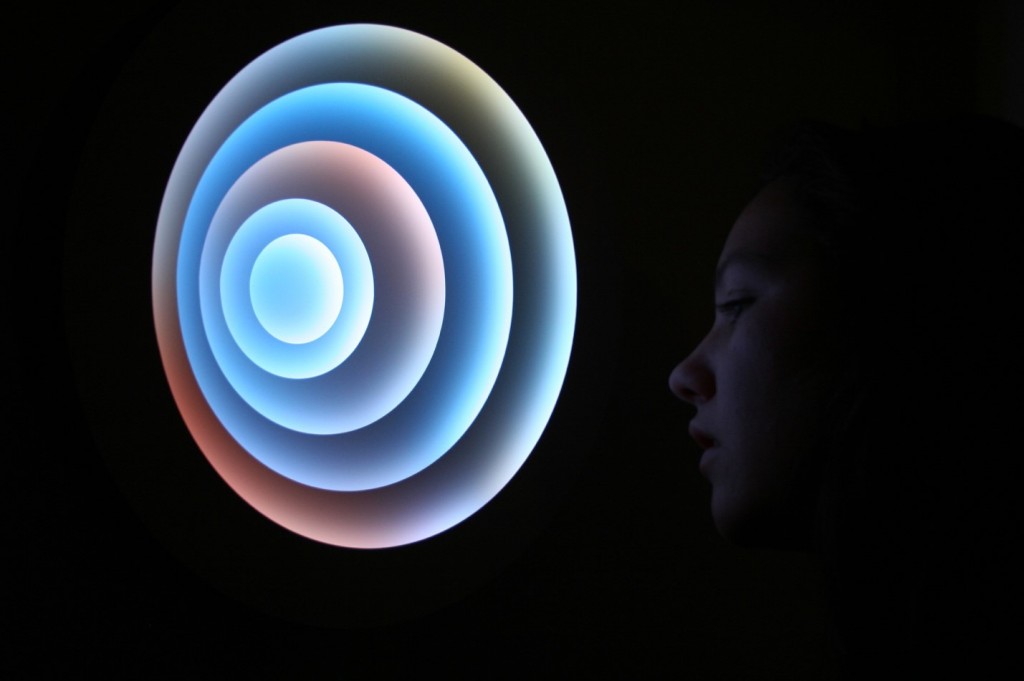 Mairan Smith, Oakland Galleries
Mairan Smith, Oakland Galleries
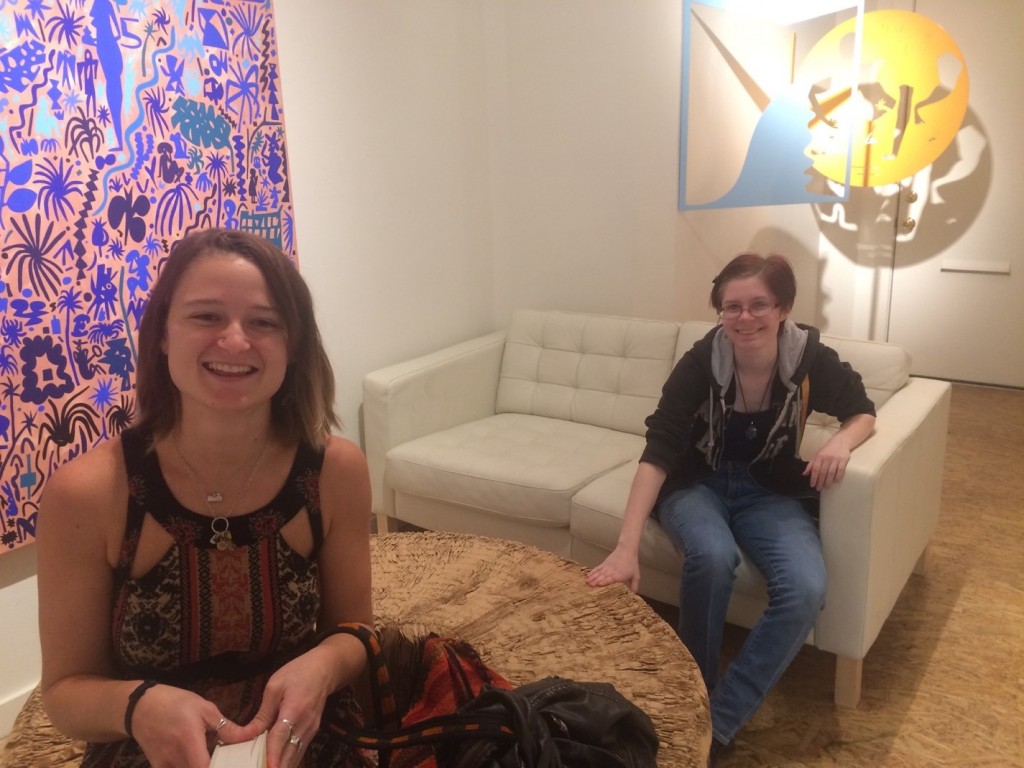 Sequoia Leech-Kritchman and Megan Breiter, Oakland Galleries
Sequoia Leech-Kritchman and Megan Breiter, Oakland Galleries
One of the galleries that I found most interesting was an artist run gallery called Mercury20. The gallery had several rooms and each room was rented out by a different artist who could plan shows however they wished in their space. One artist actually converted half of his space to use as his studio and used the rest of his gallery space show work from a number of other ceramic artists. So, he was essentially running a gallery within a gallery. I thought Mercury20 was really cool because it was great to see all these artists working together to create a positive creative community centered around the artists. The same artist who had split his space into half gallery and half studio suggested that we should check out the space next door to Mercury20 which was a large studio space shared by 8 or 9 artists. I thought it was great to see another example of a shared creative space. It was really interesting not only to get to see so many different places and different kinds of work but also to get to talk to the people who worked in these places and made art. It was very cool to get to hear about what paths different people have taken on their way to becoming professional artists and to hear all the enthusiasm that people have for their work.
After visiting all the galleries, we got to have dinner with a couple of Puget Sound Art alums. It was nice getting to talk to people who had recently been where we are now and to hear about what they have done since leaving Puget Sound. We got to hear about their experiences with grad school as well as what kind of career paths they are on and thinking about the all the different possibilities of what to do with an art degree.
DAY II
Ally Hembree, Emily Katz, and Sequoia Leech-Kritchman:
It’s a sunny morning in San Francisco, as we ride into the city, excited for the day. The smoke of the recent fires has begun to clear and we are excited to start a new day of our adventure. Soon we arrive in San Francisco and we can already tell that the art we see today will be different.
We are greeted by Victor Cartagena outside of a building complex neither of us could be aware of what is held inside. As we go through the gates and down the hallways it is clearly evident that there is a community of arts living inside. As we come upon Victor’s studio one might miss the door altogether as it is camouflaged by an array of pictures, flyers, and other extraneous pieces that are glittered haphazardly in an array of collage.
There is nothing quite like seeing an artist’s studio. How an artist works, where they work, what they decide to surround themselves with all contributes to the art they are creating. There is art in every corner, on every spot of the walls, on the floor and between the chairs of Victor’s studio. We sit there and listen to his stories, we ask him questions and take it all in. Within such a space time is easily lost in the art. When we finally gather our things to leave it feels like a different day as Victor’s words still play back in my mind as we walk down the streets of San Francisco to our next destination for the day.
Next, we are off to the SFMOMA.
By the time we arrive, the excitement of being in Victor’s studio has started to wear off. We realize just how hungry we are and take a moment to replenish our bodies before immersing ourselves in more art. As soon as we begin to wander through this enormous space, we immediately start to recognize pieces that we have only ever seen in our art history classes. We stand in awe as we take in Louise Bourgeois’ immense spider sculptures and feel astounded as we walk through Richard Serra’s Sequence, perplexed by how such a piece was created.
Over the next couple of hours, we each find pieces that move us and others that we don’t quite understand. We are pushed to think differently about our own work and inspired to try things we hadn’t considered before. Far too soon, the museum reaches closing, and we reluctantly file back out into bustling city streets of San Francisco.
Soon enough, we find ourselves asleep in a city park, exhausted from an exciting day. Feeling rejuvenated, we wander through the city, trying to take in all that it has to offer. Finally, with some Ethiopian food and egg tarts in our bellies, we board BART back to our cozy Airbnb, smiling from the day’s adventures and excited for what tomorrow might bring.
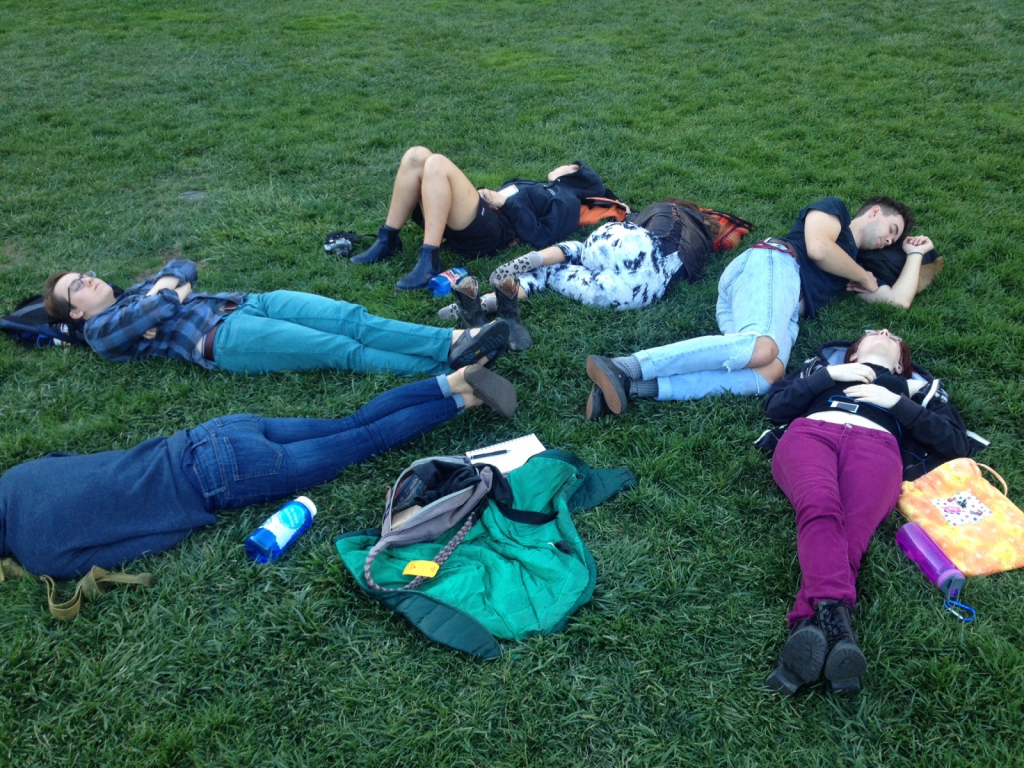 Nap in the Yerba Buena Gardens
Nap in the Yerba Buena Gardens
Day III
Megan Breiter:
For Sunday of our Fall Break trip we all spent the day exploring the Berkeley area. Compared to Friday and Saturday, we had much more free time to wander around and see different stores and places, taking a bit more of the pedestrian side along with the art scene.
One of the main places we visited was the UC Berkeley Museum of Art and Film Archive at the Berkeley campus. While there were only a few exhibits open at the time, some of the art collections they had on display there were highly impressive. The pieces that stood out the most to me were the works by Martin Wong, an artist from the Bay Area who was prominent from the 70s onward until his death in the 90s. His works were incredibly varied and spanned a large gamut of subjects, from constellations to sign language to architecture and portraits of prisons. He meticulously painted buildings brick by brick, finding colors that you would never expect and creating figures and objects from those building blocks. Some of my favorite pieces of his were his works depicting his memories and feelings of San Francisco’s Chinatown and his own heritage, showing larger-than-life dragons in parades or honoring icons like Bruce Lee in mythical forms. I greatly admired his use of line and color in his acrylic paintings and found them to be some of the most compelling pieces of the entire trip.
After the Berkeley museum, we had free time to wander the area, checking out different stores and food stops around the campus, mainly on Telegraph Avenue. From there we travelled back to Oakland to meet Robb Putnam at his home and studio where he creates giant animal sculptures from fabric and found materials. His works were impressive in their scale, and they were reminiscent of taxidermy and uncanny childhood toys all at once. Robb was also kind enough to talk to us about his artistic path and the choices he made in continuing his education and exploring different options in his life which was valuable to hear.
When evening rolled around we stopped by another massive thrift stop called Urban Ore, a large warehouse filled with anything you could possibly imagine, from old prints and family photos to wooden doors to rusted industrial machines. It was such a massive place that we barely scratched the surface of what it had to offer, but it was recommended to us as a prime place to find raw materials for use in artistic projects. If nothing else, it was somewhere you could spend literal hours in and still uncover strange new things.
Finally, to finish the day we walked to an Indian cafeteria which was immensely popular and served authentic made-to-order food that was quite delicious! After travelling and three full days of walking and absorbing art, we were all exhausted but inspired. From my impressions, we were all buzzing with different ideas taken from the vast amounts of art we saw and artists we met, which I believe proved just how valuable our experience was.
Sophia Munic’s campus project
Junior art major Sophia Munic independently proposed an interactive chalk mural in the Wheelock Student Center. Her proposal was successful and has opened up a space in the campus’ main social hub for students to have a voice. Check out images of different stages in the mural’s development and Sophia’s statement, which eloquently expresses the mural’s purpose.
Chalk to Me
The Wheelock Student Center is a space for students to express their ideas and opinions. I want the walls of this building to reflect that this is student space, and that starts with incorporating more student art. I made this chalkboard to act as a vessel for students to write and doodle their thoughts in a space that is theirs. By posting different questions and prompts regularly on this mural as well as inviting students to create temporary murals on the chalkboard, I invite you to share your ideas with our Puget Sound community in a respectful and inclusive* manner by using the chalk provided to write, draw, and contribute to this mural.
*This mural does not tolerate words of discrimination or hate, and the words on this mural should be written in context of the ASUPS principles of Equity, Accessibility, Inclusion, Justice, and Community. If this space is abused with words of intolerance or hate, your words will be erased.

